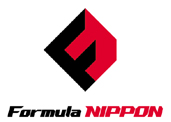- Formula Nippon
Infobox motorsport championship

pixels = 171px
caption =
category = single seaters
country/region = flagicon|JapanJapan
inaugural = 1973
drivers = 22 [http://www.speedsportmag.com/en/formula_nippon/entrylist.php?sid=248 2007 Entry List] "Speedsportmag.com." Retrieved onAugust 28 2007.]
teams = 10
constructors = Lola
engines =Toyota Honda
champion driver = flagicon|JPNTsugio Matsuda
champion team = flagicon|Japan Team Impul
website = [http://www.f-nippon.co.jp/ Formula Nippon Official Website]Formula Nippon is a type of
formula racing and the top level of single-seater racing inJapan .Formula Nippon has a fairly long history, evolving from the Japanese Formula 2000 series begun in
1973 by way of the JapaneseFormula 2 and JapaneseFormula 3000 championships. For the most part, the Japanese racing series have closely followed their European counterparts in terms of technical regulations, but there have been some important exceptions.When European Formula 2 ended in 1984, its Japanese counterpart did not follow suit, continuing to use Formula 2 regulations (with almost-exclusively 2.0 L
Honda engines) for another three years, finally switching to the open Formula 3000 standard in 1987. Once again, Japanese and European regulations paralleled one another, until 1996, when the International Formula 3000 series became a one-make format to lower costs. The Japanese Formula broke away at this time, and made it official by changing the series name to Formula Nippon.Until recently, Formula Nippon was an open formula, where a variety of chassis builders and engine manufacturers could compete. Chassis were supplied by Lola, Reynard, and G-Force, while
Mugen-Honda supplied the vast majority of the engines (thoughCosworth engines were found in the Formula 3000 era). However, with thebankruptcy of Reynard in 2002, and the withdrawal of G-Force a year earlier, Formula Nippon once again followed F3000's lead in becoming a one-make series. Formula Nippon cars are now all Lola B03/50 chassis powered by Mugen-Honda engines; however, unlike F3000, engines in Formula Nippon are open-tuned by private companies.In 2006 Formula Nippon underwent a drastic revision of its regulations. The current Lola B03/50 chassis was replaced by a new Lola FN06 chassis, while the engine formula underwent drastic revision. Blocks were provided by
Toyota and Honda, using the same block specifications as found in the 2005Indy Racing League , with open-tuning still permitted.The 2006 season got off to one of the strangest starts in motorsport history. The opener at Fuji was cancelled after two safety car laps. Benoît Tréluyer was given the win, and half points were awarded.
However, despite the more technically demanding regulations, Formula Nippon remains a national series, with second tier status compared to the pan-European
GP2 Series and its predecessor Formula 3000. While foreign drivers have always been regular participants in Formula Nippon, these are very often second string drivers who had difficulty in finding a top-level Formula 3000 drive. Nevertheless, there have been several drivers to come from a Japanese Formula 3000 or Formula Nippon drive to a prominent Formula One role; the best-known of these areRalf Schumacher , the 1996 Formula Nippon champion, andPedro de la Rosa , the 1997 Formula Nippon champion.The
2008 Formula Nippon season is currently underway, still using the same Lola chassis andToyota and Mugen Honda engines.Tsugio Matsuda had a clear lead in the driver's championship after the opening two races.Swift Engineering, INC. in San Clemente, CA is currently producing the chassis that will be contested for the 2009 season.
List of champions
Footnotes
External links
* [http://www.f-nippon.co.jp/ Formula Nippon Official Site]
Wikimedia Foundation. 2010.
